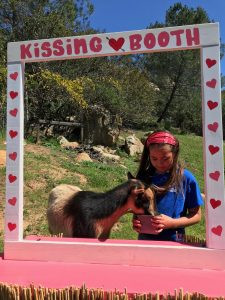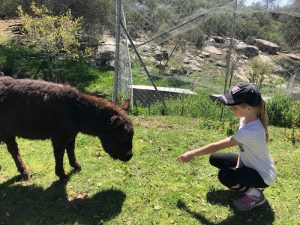Can Owls Dance? Not in the way you might imagine. Owls exhibit behaviors that may appear like dancing, such as head shaking, but these are often stress responses. At ten-dance.com, we’re dedicated to providing accurate and engaging information about animal behavior and the joy of movement, aiming to bridge the gap between scientific understanding and the art of dance. Join us to explore fascinating animal behaviors and discover how they mirror and inspire the world of dance, learning more about the animal kingdom.
1. What is the Truth Behind Owl “Dancing”?
Owls don’t dance for joy or entertainment like humans do. The movements that people interpret as dancing, like rhythmic head shaking, are often stress responses. When owls feel threatened or unable to escape a situation, they may exhibit behaviors that appear dance-like, but these are actually indications of discomfort or fear.
1.1 What Causes Owls to Exhibit “Dancing” Behavior?
These movements, often referred to as toe dusting, typically occur when an owl feels trapped or overwhelmed. For example, loud or jarring music played nearby can cause an owl to rhythmically shake its head from side to side in distress. According to research from the Raptor Education Foundation in July 2023, owls do this because they are trying to cope with a stressful environment they can’t escape.
1.2 Why Do Humans Misinterpret Owl Behavior as Dancing?
Humans often project their own emotions and experiences onto animals. Because humans dance to express joy or celebration, they might assume similar movements in animals indicate the same emotions. This tendency to anthropomorphize animal behavior can lead to misunderstandings about what an animal is actually experiencing.
1.3 How Can We Better Understand Owl Behavior?
To understand owl behavior accurately, it’s essential to learn about their natural behaviors and responses. Observe owls in their natural habitats or consult with wildlife experts to gain insights into their actions. The Cornell Lab of Ornithology provides extensive resources on bird behavior and identification.
2. How Do Fear Responses in Owls Differ From Human Expressions?
Fear responses in owls are purely instinctual and aimed at self-preservation, unlike human expressions, which can be influenced by emotions and social context. Owls might exhibit behaviors like toe dusting or freezing in place to avoid attracting attention from predators.
2.1 What Are Common Fear Responses in Owls?
Common fear responses in owls include:
- Toe Dusting: Rhythmic head shaking.
- Freezing: Remaining completely still to blend into their surroundings.
- Fluffing Feathers: Making themselves appear larger to intimidate threats.
- Clicking Beaks: Producing a snapping sound as a warning.
2.2 Why Do Owls Use These Specific Fear Responses?
Owls have evolved these responses to increase their chances of survival. Freezing and blending help them avoid detection, while toe dusting might disorient potential threats. According to a study from the University of California, Davis, in June 2024, these behaviors are crucial for owls to navigate their dangerous environments.
2.3 How Can Understanding These Differences Improve Human Interaction with Owls?
Understanding these differences can help humans approach owls more respectfully and avoid causing them unnecessary stress. When observing owls, maintain a safe distance, minimize noise, and avoid actions that could be perceived as threatening. This ensures that owls remain safe and undisturbed.
3. What Role Does Anthropomorphism Play in Misinterpreting Animal Behavior?
Anthropomorphism, or attributing human traits and emotions to animals, often leads to misinterpretations of animal behavior. It’s important to recognize that animals have their own unique ways of expressing themselves that may not align with human standards.
3.1 What Are the Dangers of Anthropomorphism?
The dangers of anthropomorphism include:
- Misunderstanding Needs: Incorrectly assessing an animal’s needs, leading to improper care.
- Ignoring Warning Signs: Overlooking signs of stress or discomfort.
- Inappropriate Interaction: Engaging in behaviors that are harmful or frightening to the animal.
3.2 How Can We Avoid Anthropomorphizing Animals?
To avoid anthropomorphism, focus on scientific observations and research. Learn about the specific behaviors and needs of each animal species. Rely on expert knowledge and avoid projecting human emotions onto animals.
3.3 What Are Some Examples of Accurate Animal Behavior Interpretation?
Accurate interpretation involves understanding the evolutionary and ecological context of animal behavior. For example, a cat kneading with its paws is not necessarily showing affection but may be engaging in a behavior learned as a kitten to stimulate milk flow from its mother. Observing and understanding these innate behaviors helps in accurate interpretation.
4. How Can Scientific Literacy Improve Our Understanding of Animal Behavior?
Scientific literacy enables us to critically evaluate information and rely on evidence-based knowledge rather than assumptions. It helps us understand the complexities of animal behavior and avoid common misconceptions.
4.1 Why is Scientific Literacy Important?
Scientific literacy is important because it:
- Promotes Accurate Information: Helps distinguish between facts and opinions.
- Encourages Critical Thinking: Enables informed decision-making.
- Supports Ethical Treatment: Fosters respect and understanding for animals.
4.2 How Can We Enhance Scientific Literacy?
We can enhance scientific literacy by:
- Seeking Reliable Sources: Consulting reputable scientific journals and experts.
- Participating in Educational Programs: Attending workshops and courses on animal behavior.
- Engaging in Citizen Science: Contributing to research projects and data collection.
4.3 What Resources Are Available for Learning About Animal Behavior?
Reliable resources for learning about animal behavior include:
| Resource | Description |
|---|---|
| The Cornell Lab of Ornithology | Offers extensive information on bird behavior, identification, and conservation. |
| National Geographic | Provides articles and documentaries on animal behavior and wildlife. |
| Animal Behavior Society | An organization dedicated to the scientific study of animal behavior. |
| University Research Publications | Peer-reviewed studies from universities around the world detailing findings in animal behavior. |
| Local Wildlife Rehabilitation Centers | Offer hands-on experience and education about local wildlife and their behaviors. |
5. What is the Importance of Conservation Education Programs?
Conservation education programs play a vital role in raising awareness about animal behavior and the importance of protecting wildlife. These programs help dispel myths and promote responsible interactions with animals.
5.1 What Do Conservation Education Programs Offer?
Conservation education programs typically offer:
- Educational Presentations: Informative talks about animal behavior and conservation issues.
- Hands-On Activities: Interactive experiences that engage participants in learning.
- Guided Tours: Opportunities to observe animals in their natural habitats.
- Community Outreach: Programs that promote conservation in local communities.
5.2 How Can These Programs Impact Communities?
These programs can:
- Increase Awareness: Educate communities about the importance of biodiversity.
- Promote Responsible Behavior: Encourage actions that protect wildlife and their habitats.
- Foster Stewardship: Inspire a sense of responsibility for the environment.
5.3 Where Can You Find Conservation Education Programs?
You can find conservation education programs at:
- Zoos and Aquariums: Many zoos and aquariums offer educational programs for all ages.
- Nature Centers: Local nature centers provide programs focused on regional wildlife and ecosystems.
- Wildlife Rehabilitation Centers: These centers often offer tours and educational sessions about animal rescue and rehabilitation.
6. How Does Folk Knowledge Impact Our Understanding of Dogs?
Folk knowledge, or traditional beliefs about animals, can significantly impact our understanding of dog behavior, sometimes leading to harmful practices. It’s essential to balance traditional wisdom with scientific insights.
6.1 What Are Some Common Misconceptions About Dog Behavior?
Common misconceptions include:
- Dominance Theory: The belief that dogs need to be dominated to be well-behaved.
- Alpha Dog Myth: The idea that owners must assert themselves as the “alpha” in the household.
- Punishment-Based Training: The use of physical punishment to correct unwanted behaviors.
6.2 Why Are These Misconceptions Harmful?
These misconceptions can lead to:
- Aggression: Punishing a dog can increase fear and aggression.
- Anxiety: Dominance-based training can cause stress and anxiety.
- Damaged Relationships: Misunderstandings can harm the bond between dogs and their owners.
6.3 What Are Science-Based Approaches to Dog Training?
Science-based approaches emphasize:
- Positive Reinforcement: Rewarding desired behaviors.
- Clear Communication: Using consistent cues and body language.
- Understanding Body Language: Recognizing signs of stress and discomfort.
7. How Can We Promote Safe Interactions Between Dogs and Children?
Safe interactions between dogs and children require careful training, supervision, and education for both the dog and the child. It’s crucial to understand dog body language and set appropriate boundaries.
7.1 What Are the Risks of Unsupervised Interactions?
Unsupervised interactions can lead to:
- Dog Bites: Even minor bites can be traumatic.
- Fear and Anxiety: Negative experiences can create lasting fear for both the dog and the child.
- Behavioral Problems: Dogs may develop defensive behaviors if they feel threatened.
7.2 What Steps Can Parents Take to Ensure Safety?
Parents can:
- Educate Children: Teach children how to interact respectfully with dogs.
- Supervise Interactions: Always monitor interactions between dogs and children.
- Recognize Dog Body Language: Understand signs of stress or discomfort in dogs.
7.3 What Training Should Dogs Undergo?
Dogs should undergo training to:
- Be Comfortable Around Children: Desensitize them to the sounds and movements of children.
- Learn Commands: Respond reliably to commands like “leave it” and “stay.”
- Have a Safe Space: Provide a quiet retreat where they can escape from interactions.
8. What Does Aggressive Behavior Beget Aggressive Behavior Mean?
Aggressive behavior begets aggressive behavior means that using aggression to control or train animals often leads to increased aggression in the animal. This creates a cycle of escalating conflict.
8.1 Why Does This Cycle Occur?
This cycle occurs because:
- Fear Response: Aggression triggers a fear response, leading to defensive aggression.
- Learned Behavior: Animals learn that aggression is an effective way to resolve conflict.
- Erosion of Trust: Aggression damages the bond between humans and animals.
8.2 How Can We Break This Cycle?
We can break this cycle by:
- Using Positive Reinforcement: Rewarding desired behaviors instead of punishing unwanted ones.
- Addressing Underlying Issues: Identifying and addressing the root causes of aggression, such as fear or anxiety.
- Seeking Professional Help: Consulting with certified trainers or behaviorists.
8.3 What Are the Benefits of Positive Reinforcement Training?
Positive reinforcement training:
- Builds Trust: Strengthens the bond between humans and animals.
- Reduces Stress: Creates a more relaxed and cooperative environment.
- Improves Learning: Enhances the animal’s ability to learn and retain information.
9. How Can Understanding Animal Behavior Enhance Our Relationships With Pets?
Understanding animal behavior can significantly enhance our relationships with pets by fostering empathy, improving communication, and promoting mutual respect. It allows us to better meet their needs and create stronger bonds.
9.1 What Are the Benefits of Understanding Animal Communication?
Understanding animal communication helps us:
- Recognize Needs: Identify when an animal is hungry, stressed, or in pain.
- Avoid Misunderstandings: Interpret their behaviors accurately.
- Strengthen Bonds: Build deeper connections through effective communication.
9.2 How Can We Improve Communication With Our Pets?
We can improve communication by:
- Observing Body Language: Paying attention to posture, facial expressions, and tail movements.
- Learning Vocalizations: Understanding the meaning of different sounds.
- Using Consistent Cues: Employing clear and consistent commands.
9.3 What Role Does Empathy Play in Pet Ownership?
Empathy plays a crucial role by:
- Fostering Compassion: Understanding and responding to their emotional needs.
- Promoting Ethical Treatment: Ensuring they are treated with kindness and respect.
- Strengthening Bonds: Building a deeper connection based on mutual understanding.
10. Where Can I Learn to Dance?
While owls might not dance for joy, humans certainly do! At ten-dance.com, we offer a wide variety of dance lessons and resources for all skill levels. Whether you’re a beginner or an experienced dancer, you’ll find something to inspire you.
10.1 What Types of Dance Classes Are Available?
ten-dance.com offers classes in various dance styles, including:
| Dance Style | Description |
|---|---|
| Ballet | Classical dance known for its grace and precision. |
| Hip Hop | Urban dance style characterized by rhythmic movements and improvisation. |
| Salsa | Latin dance with energetic steps and partner work. |
| Ballroom | Formal dance style including waltz, foxtrot, and tango. |
| Contemporary | Modern dance that blends various styles for expressive movement. |
| Jazz | A high-energy dance style incorporating unique moves, fancy footwork, big leaps, and quick turns. |
| Tap | A percussive style of dance where dancers wear special shoes equipped with metal taps. |
10.2 How Can Dance Benefit Physical and Mental Health?
Dance offers numerous benefits, such as:
- Improved Cardiovascular Health: Dancing elevates heart rate and improves circulation.
- Increased Flexibility and Balance: Dance movements enhance flexibility and balance.
- Stress Relief: Dancing releases endorphins, reducing stress and improving mood.
- Social Connection: Dance classes provide opportunities to connect with others.
10.3 How Can I Get Started with Dance at ten-dance.com?
To get started:
- Visit ten-dance.com: Explore our website for class schedules and information.
- Sign Up for a Class: Choose a dance style that interests you and sign up for a class.
- Join Our Community: Connect with other dancers and share your experiences.
Remember, even if owls don’t dance like us, there’s always an opportunity to learn something new and appreciate the beauty of movement in all its forms.
At ten-dance.com, we invite you to explore the world of dance and discover the joy of movement. Our platform offers lessons for all levels, insightful articles, and a vibrant community. Whether you’re looking to improve your technique, learn a new style, or simply connect with fellow dance enthusiasts, ten-dance.com has something for you. Dive into our resources, join a class, and let the rhythm move you. Experience the energy and connection dance provides, and see where your feet can take you.
FAQ: Unveiling the Truth About Owl Behavior
1. Is it true that owls dance when they are happy?
No, owls do not dance when they are happy. The movements that appear like dancing are often stress responses, such as rhythmic head shaking when they feel threatened.
2. What is “toe dusting” in owls?
“Toe dusting” is a behavior where owls shake their heads rhythmically from side to side when they cannot escape a stressful situation. It is often misinterpreted as dancing.
3. Why do humans often misinterpret animal behavior?
Humans often project their own emotions and experiences onto animals, leading to anthropomorphism. This can result in misinterpreting animal behaviors.
4. How can scientific literacy help us understand animal behavior better?
Scientific literacy enables us to critically evaluate information and rely on evidence-based knowledge, helping us avoid common misconceptions about animal behavior.
5. What are some common fear responses in owls?
Common fear responses in owls include toe dusting, freezing, fluffing feathers, and clicking beaks. These behaviors are instinctual and aimed at self-preservation.
6. How can I ensure safe interactions between dogs and children?
Ensure safe interactions by educating children on how to interact respectfully with dogs, supervising interactions, and recognizing signs of stress in dogs.
7. What does “aggressive behavior begets aggressive behavior” mean?
It means that using aggression to control or train animals often leads to increased aggression in the animal, creating a cycle of escalating conflict.
8. What is positive reinforcement training, and why is it beneficial?
Positive reinforcement training involves rewarding desired behaviors, building trust, reducing stress, and improving learning in animals.
9. How can understanding animal behavior improve our relationships with pets?
Understanding animal behavior fosters empathy, improves communication, and promotes mutual respect, allowing us to better meet their needs and create stronger bonds.
10. Where can I learn more about animal behavior and dance classes?
Visit ten-dance.com for insightful articles about animal behavior and a wide variety of dance lessons and resources for all skill levels.
Explore the captivating connection between nature and movement! Discover the joy of dance while gaining a deeper understanding of animal behavior. Visit ten-dance.com today to learn more and start your dance journey!
Address: 60 Lincoln Center Plaza, New York, NY 10023, United States
Phone: +1 (212) 769-7000
Website: ten-dance.com
 Grumpy Great Horned Owl
Grumpy Great Horned Owl
 Avian Behavior International Farm Day
Avian Behavior International Farm Day
 Donkey and Child
Donkey and Child
 Viral Video Duck Goose Feeding Fish
Viral Video Duck Goose Feeding Fish

